Trees Birds Mammals Fish Amphibians Reptiles
Wild Algarve
Bookshop
Cyathus stercoreus (Huds.) Pers. - Dung Bird's Nest
Phylum: Basidiomycota - Class: Agaricomycetes - Order: Agaricales - Family: Agaricaceae
Distribution - Taxonomic History - Etymology - Culinary Notes - Identification - Reference Sources
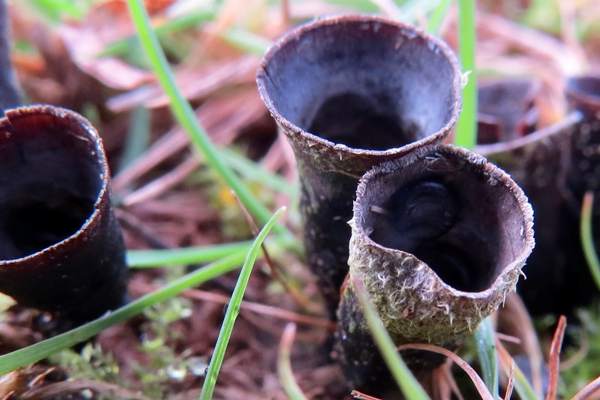
Generally referred to as the Dung Bird's Nest of Dung-loving Bird's Nest, this saprobic fungus really does look like a tiny bird's nest containing several minute eggs. It is one of several bird's-nest fungi that look quite similar to the naked eye but can be readily separated by their microscopic characters.
Distribution
Cyathus stercoreus is a rare find in Britain, although not quite so rare in some parts of Wales. This species is widely distributed throughout temperate parts of the world including mainland Euroope and North America.
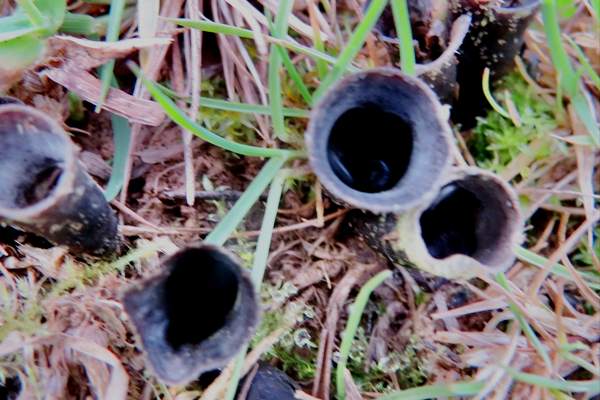
At the base of a conical structure known as a peridium, the 'eggs' are lens-shaped structures known as peridioles (pictured below), and the inner surface of the walls of each peridium are lined with basidia upon which the spores develop. Something that can help you spot these little fungi are the lids, known as epiphragms, that cover young fruitbodies and prevent rain entering until the eggs (peridioles) are ripe; the epiphragms are pale and initially covered with brown hairs that later fall off.
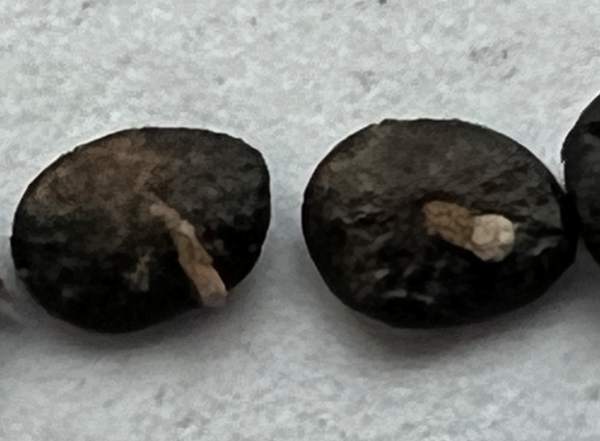
The spore dispersal process of bird's nest fungi is fascinating. When raindrops splash down the sloping sides of the cup they can dislodge the peridioles and eject them from the cup. Each peridium is connected to the inner surface of the cup by a funiculus, which is a hollow tube or sheath around a coiled up length of inter-woven hyphal cord. When the peridiole is ejected from the nest the funicular sheath ruptures, so that the peridiole carries behind it a long fine funicular cord attached to a sticky mass of hyphal threads known as a hapteron. Before the peridiole hits the ground, the hapteron may collide with a plant stem so that the funicular cord becomes attached to the plant. When a herbivore eats the plant, its dung will be infected with the fungus. By this ingenious means the spore-filled peridiole is brought into contact with a potential food source for a new mycelium. (For this fungal species to reproduce, two compatible mycelia must make contact; this 'mating' can then result in a new colony of fruitbodies. Only a tiny minority of spores ever get to reproduce sexually.)
Taxonomic history
The Dung Bird's Nest was described in 1834 by German-American mycologist and botanist Lewis David de Schweinitz (1780 - 1834), who called it Nidularia stercorea. It was Italian botanist-mycologist Giovanni Battista de Toni (1864 - 1924) who in 1888 transferred this species to the genus Cyathus, establishing its currently-accepted scientific name Cyathus stercoreus.
Synonyms of Cyathus stercoreus include Nidularia stercorea Schwein., and Cyathodes stercoreum (Schwein.) Kuntze.
Etymology
The generic name Cyathus comes from the Greek prefix kyath- meaning cup shaped (like a chalice). The specific epithet stercoreus is Latin and means of filth or (as in this instance) of dung.
Identification guide
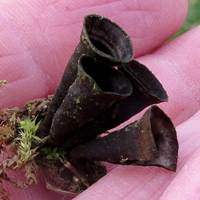 |
Fruitbody
Funnel-shaped fruitbodies (peridia) form as light-brown fluffy inverted cones; they darken with age, and the pale lid falls away to reveal egg-like peridioles. Each peridiumcontains typically four or five of these somewhat flattened 'eggs.' Peridia are 4 to 8mm across and 9 to 15mm tall. Peridioles are dark grey and typically 1 to 2mm across. |
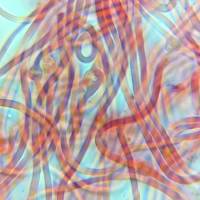 |
Funiculus
Each peridiole is attached to the side of the funnel by a funicular cord, which contains coiled up hypae (left) that expand rapidly when the cord is broken.
|
Epiphragm |
The lid (known as an epiphragm) that covers young fruitbodies and prevents rain entering until the eggs (peridioles) are ripe is whitish and initially covered with brown hairs that later fall off. |
Basidia |
The basidia are usually 4-spored. |
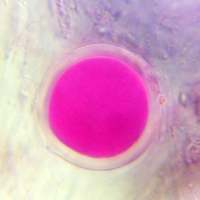 |
Spores
Subglobose, smooth with very thick walls; size very variable, 20-40 x 20-35µm; inamyloid; hyaline.
Spore mass
White. |
Odour/taste |
Not significant. |
Habitat & Ecological role |
This saprobic fungus is most often found in small clusters on rabbit droppings and sometimes on dung of other herbivores; very occasionally on woodchip mulch. |
Season |
June to November in Britain and Ireland, but fruitbodies sometimes persist into the New Year. |
Similar species |
Cyathus striatus is similar but its rim is more widely flared and the walls of cone are ribbed.
Cyathus olla and Crucibulum laeve (both without ribbed nest walls) are fairly common in Britain and Ireland as well as on mainland Europe and further afield. |
Culinary Notes
All kinds of bird's nest fungi, including Cyathus stercoreus, are reported to be inedible. My research has revealed no recipes for cooking these kinds of eggs, and the Dung Bird's Nest is not an ingredient of any kind of bird's nest soup... at least as far as I know!
Reference Sources
Flegler S L, Hooper G R., Ultrastructure of Cyathus stercoreus. Mycologia 1978 70(6):1181-1190.
Dictionary of the Fungi; Paul M. Kirk, Paul F. Cannon, David W. Minter and J. A. Stalpers; CABI, 2008
Taxonomic history and synonym information on these pages is drawn from many sources but in particular from the British Mycological Society's GB Checklist of Fungi.
Acknowledgements
This page includes pictures kindly contributed by David Hanks and Simon Harding.
Top of page...
Fascinated by Fungi. Back by popular demand, Pat O'Reilly's best-selling 450-page hardback book is available now. The latest second edition was republished with a sparkling new cover design in September 2022 by Coch-y-Bonddu Books. Full details and copies are available from the publisher's online bookshop...